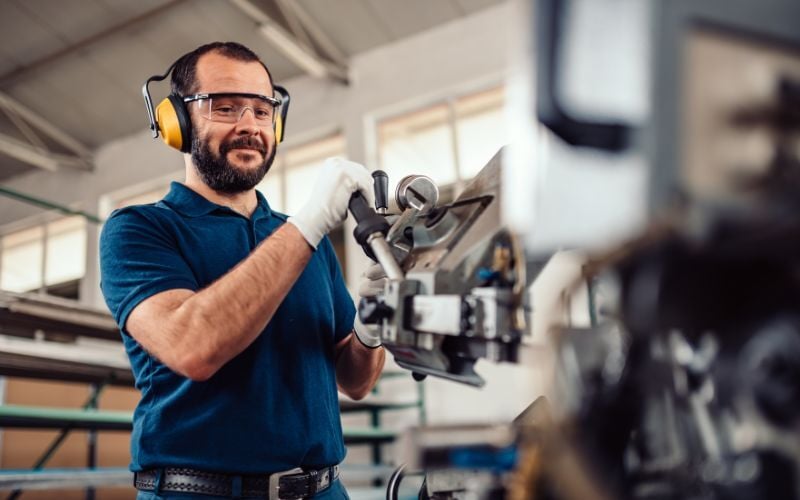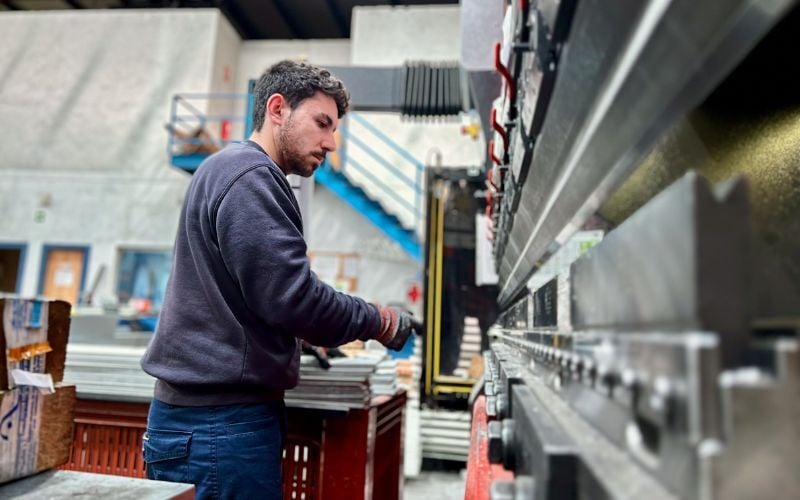When it comes to building safer, more efficient workplaces, few strategies are more impactful than pairing ergonomic risk management with employment testing. These two disciplines are often mentioned together, but they serve very different purposes in protecting employee health and improving productivity.
At its core, workplace ergonomics is the art and science of fitting the work to the worker by designing jobs, tools, and environments that support human ability and reduce injury risk. Functional employment testing, on the other hand, does the opposite: it’s about fitting the worker to the work. Testing helps determine whether a person has the physical or functional capacity to safely perform specific job demands.
When used together, testing and ergonomics form a powerful feedback loop. Testing identifies whether current employees or new hires can safely handle the job’s demands, while ergonomics helps modify those demands to reduce unnecessary risk. If a testing program shows high fail rates, it may be time for an ergonomic analysis to identify and fix the source of the problem.
This blog explores how testing and ergonomics complement each other across industries, including manufacturing, aerospace, construction, and the office environment, and how they work across the employee lifecycle from hiring to injury recovery and workplace improvement.

Manufacturing: Matching Worker Ability to Job Demand
Manufacturing is one of the clearest examples of how testing and ergonomics intersect. With physically demanding roles that often involve repetitive lifting, pushing, or operating heavy equipment, manufacturers face ongoing risk of musculoskeletal disorders (MSDs).
Testing Applications:
- Post Offer Employment Testing (POET): Manufacturers frequently use POET to confirm that candidates can meet the physical demands of a role—such as lifting 40 pounds repeatedly or performing sustained overhead work—before hire. This ensures safety and reduces early turnover due to physical mismatch.
- Fit for Duty Testing (FFD): After an injury, an employee may undergo FFD testing to confirm readiness to return safely to their position without risking reinjury.
Ergonomic Applications:
- Job Analysis and Process Evaluation: If multiple employees fail the same POET protocol or experience similar discomfort, ergonomists can step in to analyze job demands by looking at measures like posture, force, frequency, and duration. These insights inform workstation redesigns, tool selection, or process changes that reduce physical stress.
The manufacturing industry has made great strides in reducing injuries, but the constant pressure of productivity and efficiency means that risks remain. From 2022 to 2023 recordable injuries and illnesses in manufacturing dropped from 396,800 to 355,800.
Manufacturers should be using a dual approach, using testing to ensure hiring safety and ergonomics to refine work design. Injury rates in manufacturing have dropped in recent years, and pairing these two systems continues to drive safer, more sustainable production.

Aerospace: Testing Precision, Designing for Longevity
Aerospace operations demand a balance of strength, precision, and endurance. Employees might spend hours working in confined spaces, handling small components, or performing high-stakes assembly.
Testing Applications:
- Baseline Testing: Many aerospace employers use baseline testing at hire to establish an employee’s starting physical capabilities which can be used in the future to understand changes in employee capabilities.
- Fit for Duty Testing: When an employee is recovering from injury, such as a shoulder strain from overhead assembly, FFD testing helps determine readiness to safely return to high-precision work.
Ergonomic Applications:
- Job Analysis and Workstation Design: Aerospace ergonomists evaluate tasks requiring sustained awkward postures or fine motor precision. They might recommend adjustable platforms, improved lighting, or rotation schedules to minimize fatigue and improve focus.
The aerospace industry has a forward-thinking view of ergonomics, seeing ergonomics as not just as a way to reduce injury costs but also as a goal. With organizations like the Aerospace Human Factors Association and the Human Factors and Ergonomics Society, this field is working as a leader in ergonomics first applications.
Testing could be on the road to expanding, particularly in baseline and recovery assessments, as employers recognize the need to balance high performance with sustainable worker health.

Construction: Controlling Risk When Work Can’t Change
Unlike a manufacturing line or assembly station, construction sites are fluid, unpredictable, and physically intense. Workers face constant changes in environment, materials, and physical demands.
Testing Applications:
- Post Offer Employment Testing (POET): Construction companies can use POET to ensure candidates can safely perform essential functions like lifting, climbing, or working at height. The capability of this testing to accurately test a range of factors and collect exact measurements can be a major benefit in construction.
- Fit for Duty Testing: After an injury, such as a knee strain from repetitive ladder use, Fit for Duty Testing confirms that the employee has regained sufficient strength and mobility to return safely.
Ergonomic Applications:
- Job Analysis for Risk Identification: Although construction tasks can’t always be redesigned, ergonomic analysis can highlight where the greatest risks occur and guide the use of mechanical aids, team lifts, or rotation schedules to reduce strain exposure.
Because physical demands in construction can’t always be changed, testing plays a central role in controlling injury risk. But as technology and ergonomic equipment improve the industry continues to find better ways to fit the work to the worker as well.

Office Environments: Building Health and Comfort Over Time
The office may seem like a low-risk workplace, but repetitive strain injuries and poor posture remain major sources of lost productivity and discomfort. Here, ergonomics takes the lead, but testing still has a role when employees are returning from injury.
Testing Applications:
- Fit for Duty Testing: After recovering from an upper extremity condition such as carpal tunnel syndrome, an employee may undergo FFD testing to confirm readiness for full keyboard or mouse use.
Ergonomic Applications:
- Workstation Assessments: Office ergonomics programs use in-person or virtual workstation assessments to adjust monitor height, chair configuration, and keyboard positioning. These evaluations help prevent discomfort before it leads to injury.
- Self-Guided Virtual Tools: With hybrid and remote work growing, virtual ergonomic self-assessments empower employees to identify and correct poor workstation setups, reducing strain from the start.
The office sector increasingly treats ergonomics as part of wellness, productivity, and retention strategy rather than just injury prevention. Testing remains secondary but supportive, particularly for employees transitioning back to work post-injury. Testing is likely to continue expanding into self-guided platforms, making assessments more accessible for hybrid and remote employees.
A Lifecycle Approach to Ergonomics and Testing
One of the key takeaways across all industries is that ergonomics and testing together do not just address one moment in time. It spans the entire employee lifecycle, involving:
- Hiring: Through POET and similar pre-employment testing methods, employers ensure new hires are physically capable of performing essential tasks.
- Baseline Testing: Establishing initial capabilities helps employers monitor changes over time and supports early intervention if discomforts arise.
- Injury Recovery: Fit for Duty testing ensures that returning employees are safe to resume their tasks, reducing the risk of reinjury.
- Workplace Improvements: Job analysis identifies risks and informs changes to processes, equipment, and workstation design, creating safer and more efficient work environments.
When applied strategically, these tools not only reduce injury risks but also foster a culture of care and efficiency, where employees feel supported and employers benefit from reduced claims, improved productivity, and stronger retention.
Testing and ergonomics are often linked but address different factors in the workplace. Testing matches the worker to the work; ergonomics matches the work to the worker. When implemented together, they form a comprehensive approach to workforce safety and performance.
In industries ranging from manufacturing to aerospace, construction, and office settings, testing ensures that employees can perform safely within the physical demands of their jobs. Ergonomics ensures that those demands are designed as intelligently and humanely as possible.
As organizations mature in their safety and injury prevention strategies, they recognize that true workplace health comes not from choosing one or the other—but from integrating both. Together, testing and ergonomics build workplaces that are safer, smarter, and more sustainable for everyone.